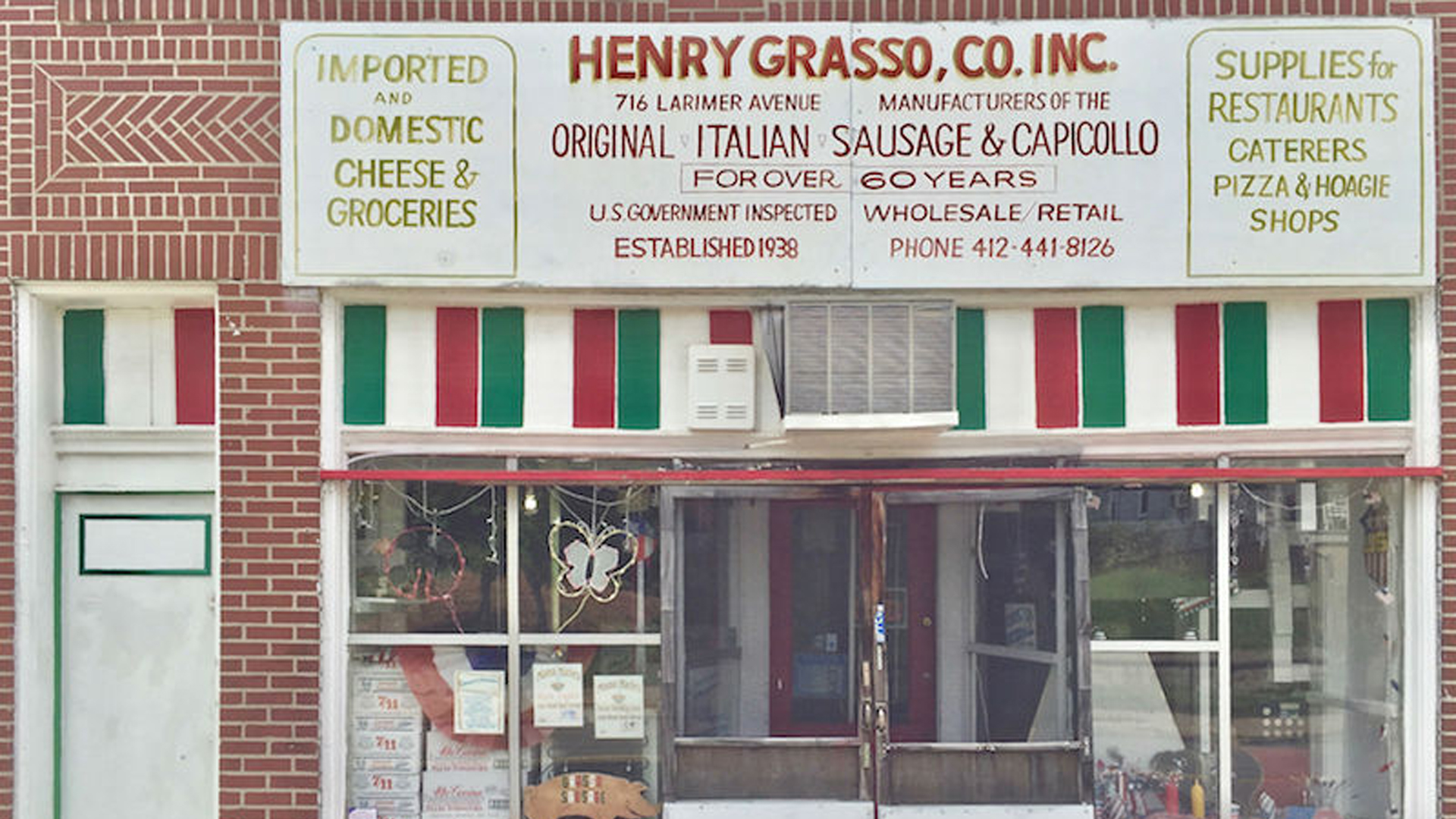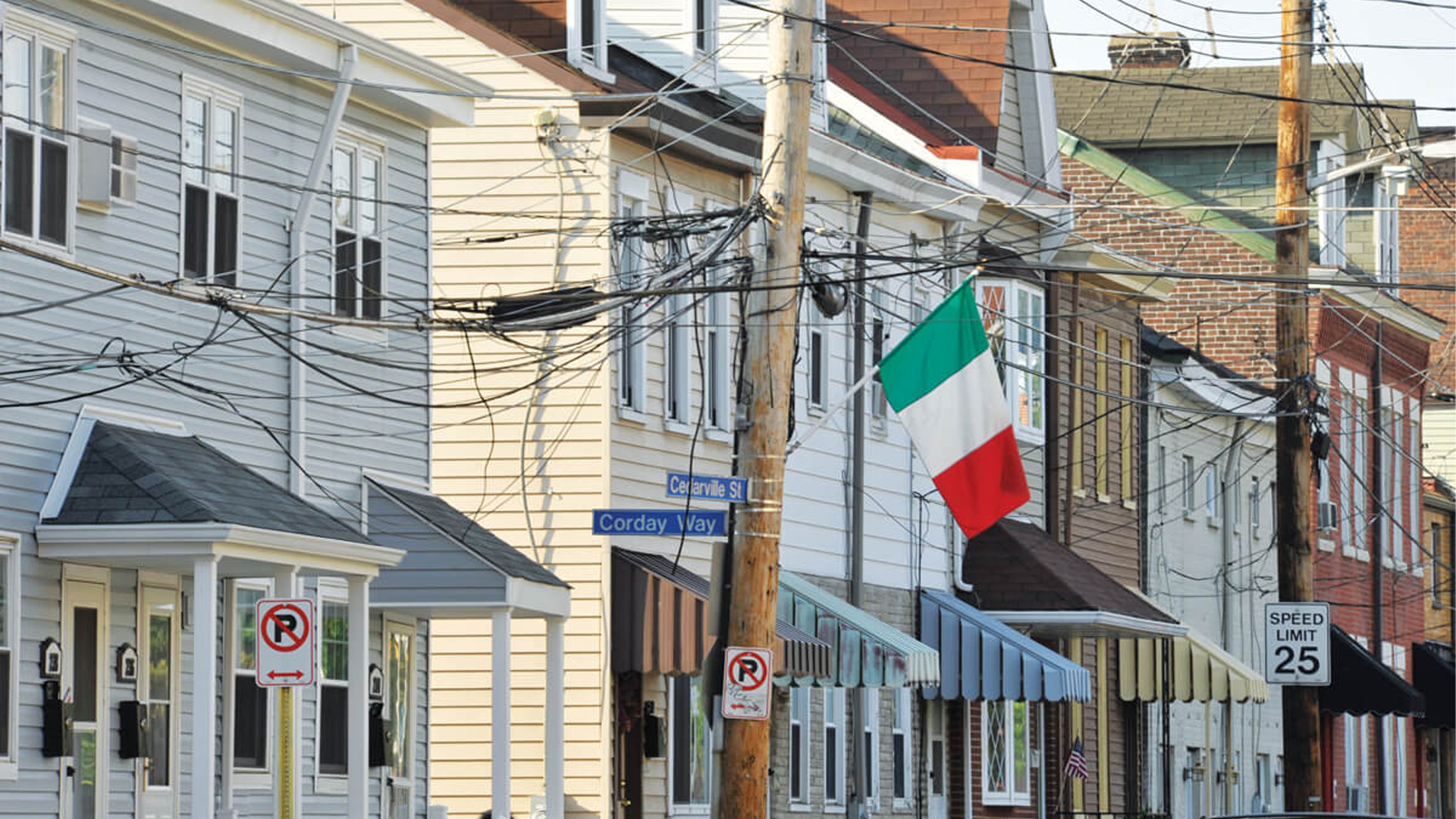Historically, the northeastern region of the United States, such as New York, New Jersey, and Baltimore, have been hubs for Italian immigration and the development of the Italian population in America. Many parts of Pennsylvania quickly gained popularity in welcoming Italians and becoming a home for this ethnic group. Pittsburgh, America’s “Steel City,” is estimated to be the fifth-largest Italian American enclave with roughly 316,000 in the Pittsburgh metro area. Architectural historian Franklin Toker has been quoted calling the Bloomfield area of Pittsburgh, “a feast, as rich to the eyes as the homemade tortellini and cannoli in its shop windows are to the stomach."
Bloomfield Becomes Little Italy

(Photo Credit: Arianna DiCicco)
Bloomfield is most commonly known as Pittsburgh’s Little Italy. John Conrad Winebiddle, whose descendants divided his plantation into lots and sold it for development beginning around 1868. The community most likely was named for the abundant blooming flowers near the original town site. The neighborhood developed as the John Conrad Winebraddle plantation, which served food to the troops at the nearby Fort Pitt during the French and Indian War. After, the area was broken into lots, being sold for development. During the 1868 annexation, the area now known as Bloomfield was extended to the city of Pittsburgh.
During the 1880s, Italians began to arrive in Pittsburgh. Most immigrants were young men looking for work at nearby coal mines, steel mills, and railroads. They remained in contact with their families in the old country and earned enough money to send for them which led to a larger immigration chain.
After the Second World War, Italians settling in Pittsburgh were mostly from the Abruzzi region after suffering displacement and poverty from the German Occupation. After arriving in New York City, they continued traveling on the railroad to Pennsylvania and eventually landed in the Bloomfield area. In 1905, the Italian population boom in Bloomfield sparked the need for a church and the community built Immaculate Conception Parish.
Pittsburgh Italian Enclaves

(Photo Credit: Arianna DiCicco)
In modern day Pittsburgh, Liberty Avenue in Bloomfield is still the largest home of Italians in the city however, it’s not the only part of “Steel City” that is considered an Italian enclave. Oakland, East Liberty, Larimer, and the Lower Hill District became small territories that consisted of an Italian population.
A small neighborhood in southeastern Pittsburgh called Hays, or known as the forgotten Little Italy, is also home to a large population of Italians. In the 1920s, Italians from Controne, a town south of Naples, migrated to this area of the city. Immigrants in Hays found work at the Jones & Laughlin and US Steel mills. Hays quickly became one of the largest Italian clubs in the Pittsburgh area called the Italian Sons and Daughters of America lodge. In true Italian spirit August 15th known as Ferragosto, or the Feast of the Assumption, was celebrated in the neighborhood and drew in large crowds with a grand fireworks show at night. Most of the businesses in this enclave were owned and operated by Italian Americans.
In the late 1960s, a superhighway was developed in Hays that devastated the area and displaced the Italian population. After the closure of an ammunition plant, the population of Hays reduced by 80%. Today, there are over 400 residents still living in Hayes, many of whom are descendants of the first Italian immigrants.
Pittsburgh Celebrates Italian Culture

(Photo Credit: Arianna DiCicco)
Pittsburgh honors its rich Italian culture with different festivals and parades throughout the year. Every August, Bloomfield hosts its annual Little Italy Days, the region’s largest Italian heritage festival. The four-day event celebrates Italian culture with food, festivities, and live entertainment and helps support Italian-owned businesses.
For more than 20 years, Bloomfield continues to host the annual Columbus Day Parade, which takes place down Liberty Avenue and proceeds onto the Bloomfield Bridge. Over 100 floats, bands, organizations, and businesses showcase the region's Italian history.
During the summer, Kennywood Amusement Park also holds their own Italian festival also called Italian Days. The park has been hosting the festival for 75 years where Italian music, food, and fun can be celebrated by all. The festival features an ethnic kitchen where local Italian-owned restaurants, like Bravo’s Italian Kitchen and Mariani’s Gourmet Foods, serve their specialties. You can also count on pizza-eating contests and incredible fireworks displays.
AJ Forrisi
Assistant Editor for America Domani, AJ Forrisi is a Brooklyn-based writer and photographer. His work focuses on food, travel, sports, landscapes, and urban scenes. You can find him on Instagram @aj.photo.works.


